Is this the Truth?
Generation Z is the first generation to have access to the Internet their whole lives. They've grown up with smart phones and social media. So how do they relate to online media? Is this the Truth? is a collection of images created by Ohio State undergraduates as part of a Ph.D. dissertation by James O’Donnell (Arts Administration, Education, and Policy). O’Donnell examines online critical media literacy through the lens of artmaking and explores how students visualize their relationship with online media. Through the project, undergraduate students were invited to respond to prompts by creating their own visual media in whatever form they desired. The resulting series of images reflects their doubt, distrust, confusion, fear and concern about the influences of social media, news media, and advertising.
Is This the Truth? is presented in partnership with Urban Arts Space's Hybrid Arts Lab, a multi-venue learning lab that experiments with how art is imagined, made, viewed and understood.
"Photo Elicitation" in the classroom
Through O'Donnell's research, undergraduate students were invited to respond to prompts by creating their own visual media in whatever form they desired. Afterward, students responded to questions about their photos and share their original images as prompts for a discussion around these ideas. The photos then served as personal tools for communication and exchange in the classroom.
In this interview, Jim O’Donnell discusses his research and Is This the Truth? with UAS intern, Genevieve Wagner.
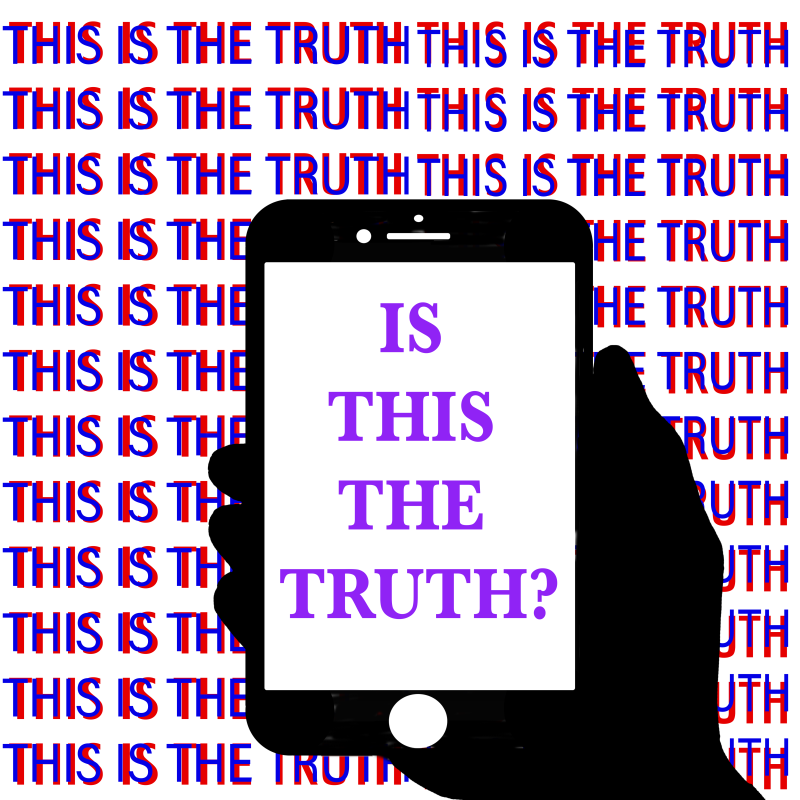
Alex Houston
With my image I wanted people not to read a statement but come to their own conclusion on what it means.
To me it represents everything on the Internet overwhelming us and leaving us confused on what is true.
I want people to think before they accept what they read.
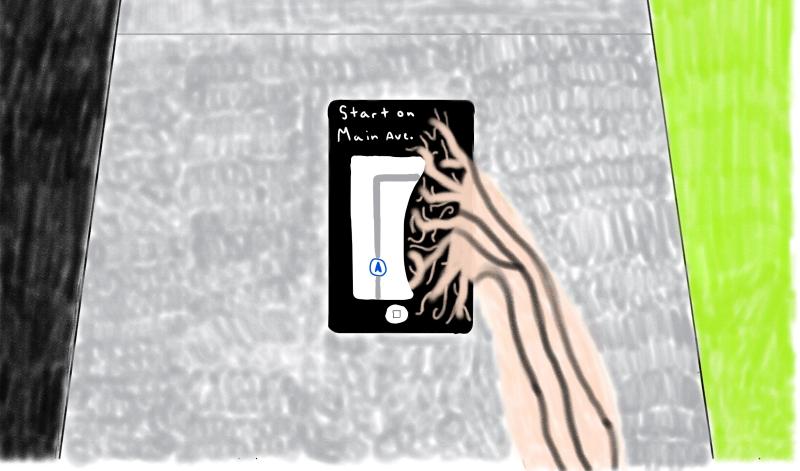
Gavin Gill
I wanted to highlight how attached to technology, mainly phones, we as a community are. It's a global issue but can also be looked at just here at OSU. Everywhere you look people are heads down stuck in their phone. I wanted to depict this need to be on a phone through the phone and person being physically fused together with the phone almost sending info through the veins of the arm depicted. This relationship isn't one sided though. It goes both ways which is why the arm goes into the phone while the phone goes into the arm. Main theme is interdependency of human and technology.
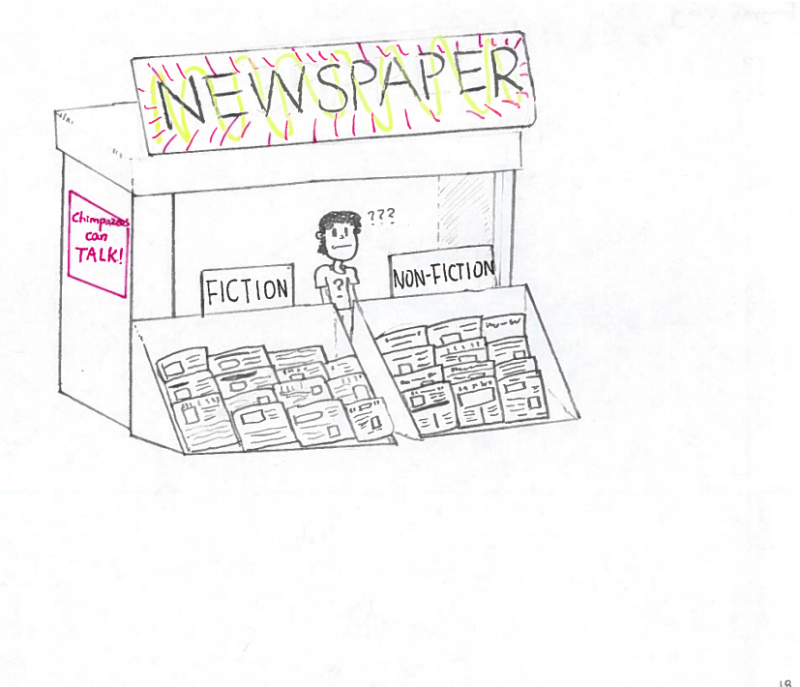
Fangyo Wang
I made a hand-drawn picture. It's about fake news. We saw a lot of fake news on social media, such as Twitter, Facebook, ESPN, and even TV news. I focused specifically on newspaper. In my picture, there is a man selling newspapers. Half of the newspapers are "fictional," and half og them are "non-fictional." It shows that there are a huge amount of fake news around us, and we are very easily influenced by them.
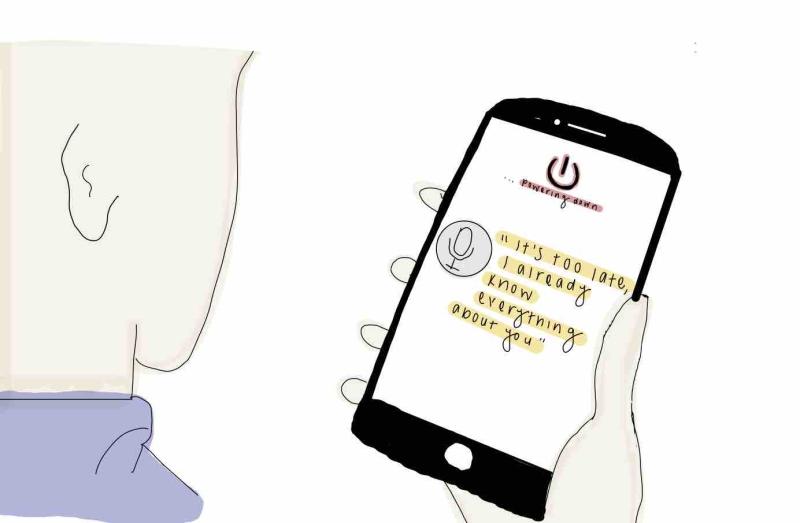
Jada Jackson
For my image, I decided to focus on the idea of your phone’s ability to compile and store your personal information. My idea was that even once you power your phone down, you’ve already agreed to so many things and your information is being stored somewhere.
I always try to be very cognizant of what I am agreeing to online. Still, it is very easy to skip reading the terms and conditions and end up agreeing to things you did not necessarily want to. I think this whole idea is very scary and I think people need to look deeper into what their phone is storing and what information it has permission to share.

Loualoua Alkaisi
I made this piece because nowadays we see news everywhere on social media, on the tv, on the radio, etc. and a lot of time we consume false information. Most of the time this information reflects on society. One example is islamophobia. We see different religions, not only Islam, portrayed a certain way in the news and that create false image and makes people think the worst of other people, when in reality the religion has nothing to do with what’s going on.
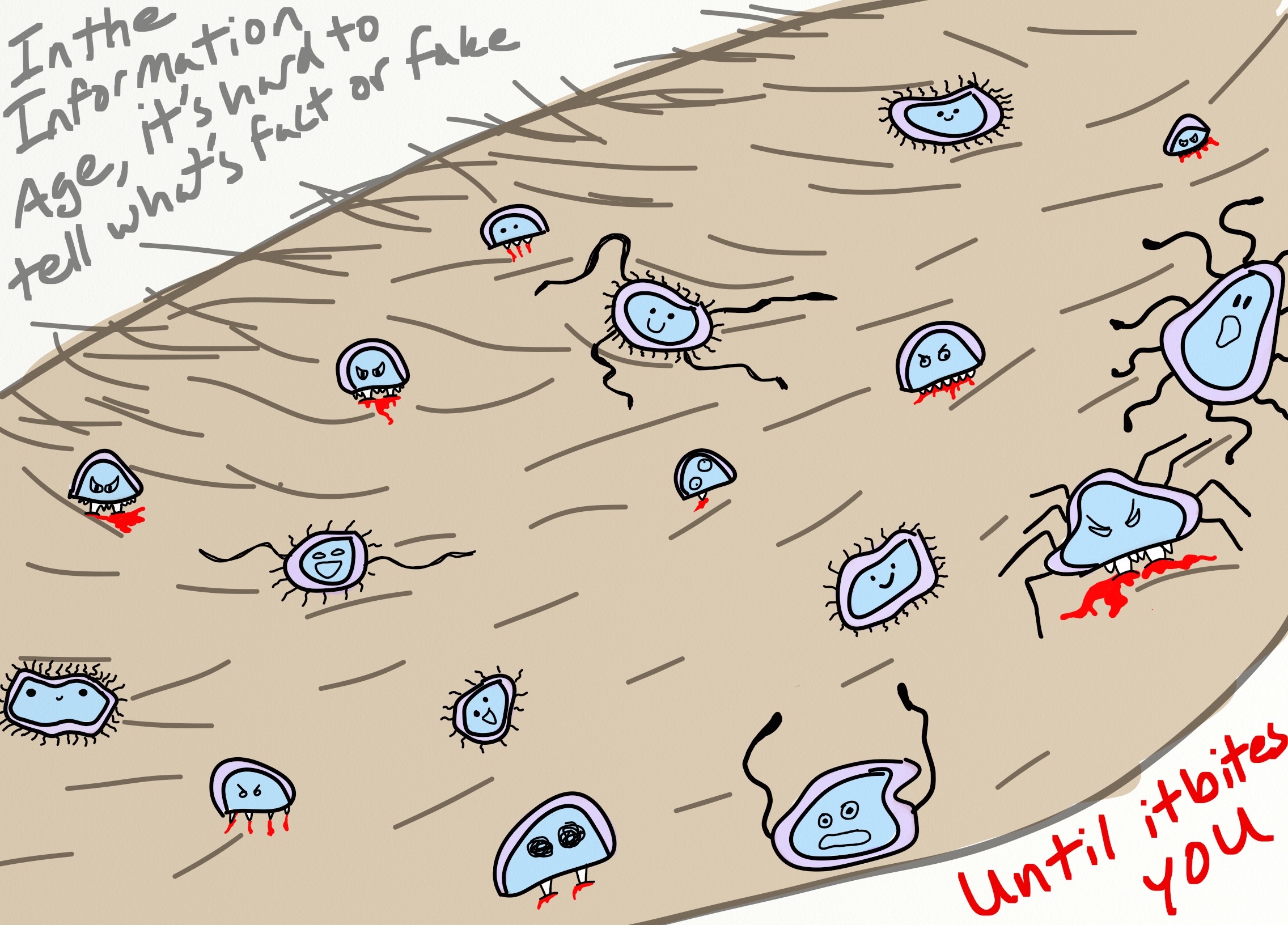
Olivia Warner
A lot of the time people use manipulative images or words to take something from you: your time, your money, your personal information and privacy. The only downside is that a lot of the information starts to look the same, so it can be difficult to differentiate between what’s fact and fake. It’s also very hard to get rid of the fake without also getting rid of the facts. I compared this to the way we have germs on our skin. A lot of them are good for us, but the bad ones are the ones we notice because they hurt us.
Making this image was interesting too, because I had to consider the different ways manipulation can get to us and how to portray it. I ended up making the faces different to represent different misinformation, with some of it being accidental like in the confused face with the single tooth, while others are malicious and specifically trying to get something from you, like the spider germ. There are also facts that are simply present like the happy germs that are just vibin’, but there are also facts that surprise or make us worried, even though they’re true.
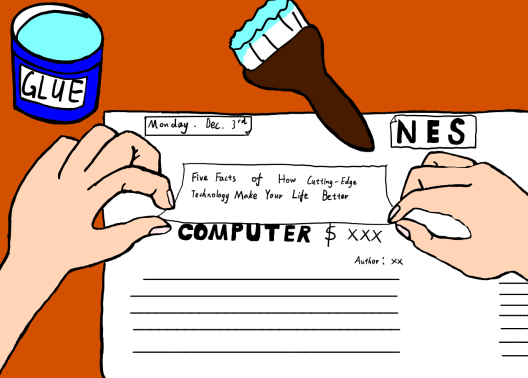
Jing Qian

Michael Johnson
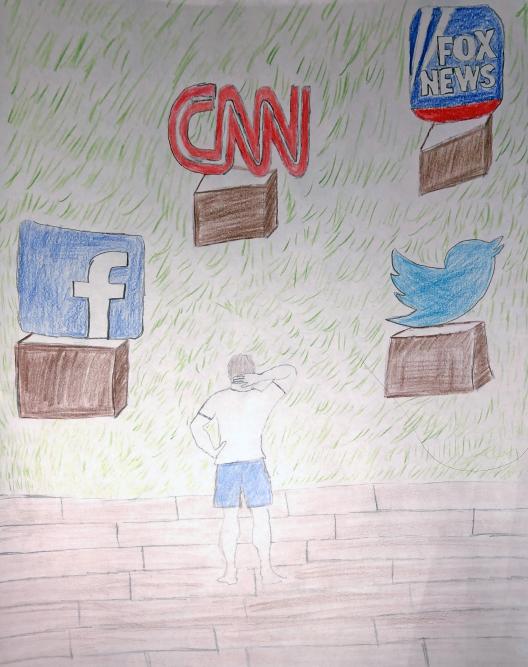
Ben Huxtable
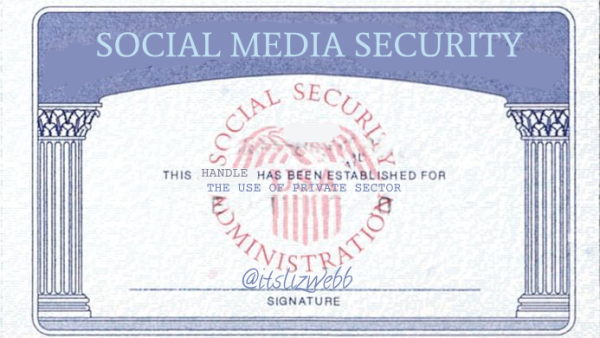
Liz Webb
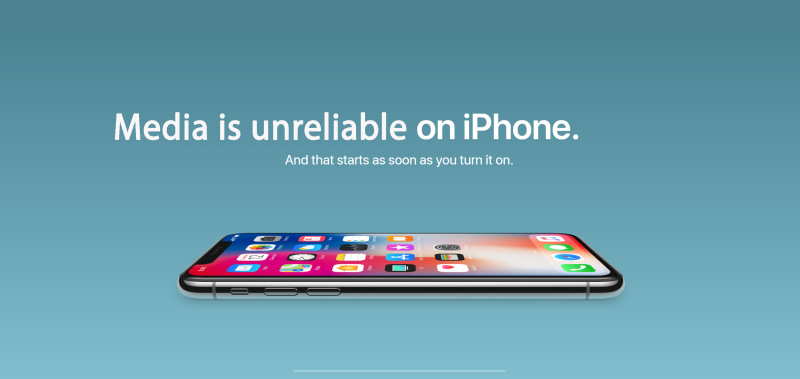
Crystal Tam
My artwork is related to the topic of media literacy. It is an ad I got from the Apple website and I Photoshopped the statement with some new text to say that not all media is true and some sources can be unreliable.
Reactions I hope to gain from my artwork can be thinking about sources from the media and how they can be false. The iphone is a common media source that has many apps that have access to media and I hope people will doublecheck about the things they read.
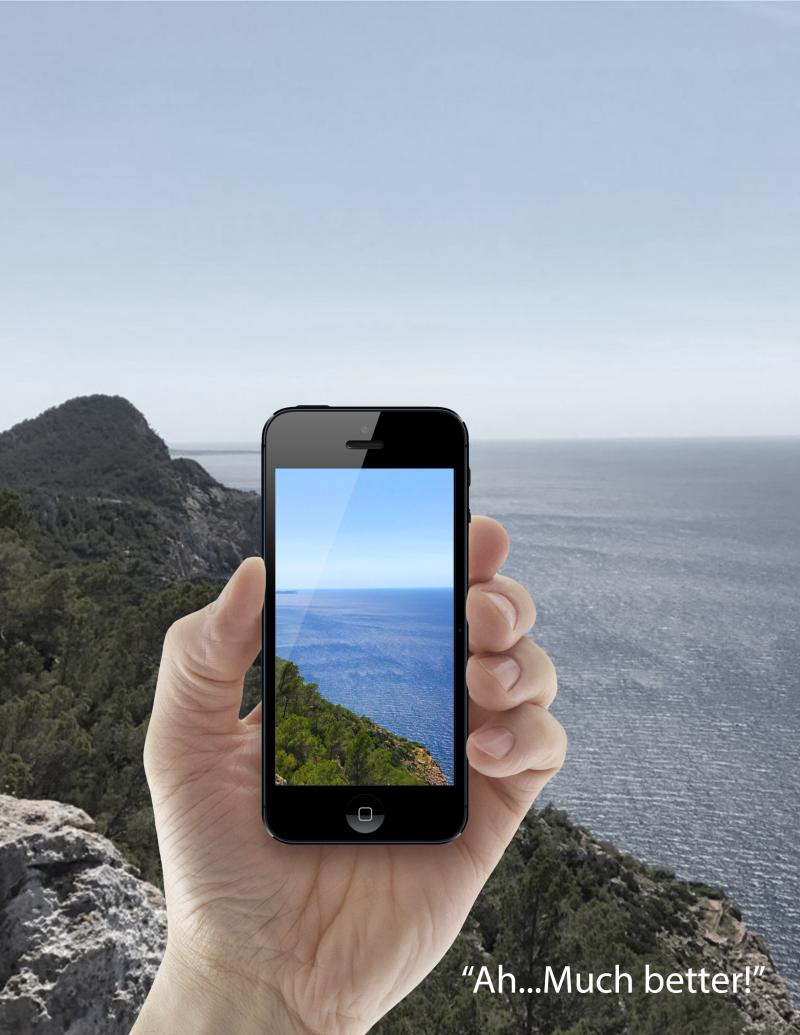
Rylee Noe
I made the image I made to try and send the message that not all "make believe" imagery is a bad thing. In my image the person has taken a photo and saturates it to make it more visually appealing to people as if it were for an intended audience. I think people will view ut in different ways because yes, it's technically a made up thing but at the same time in this scenario, what's the harm? Maybe media manipulation isn't so bad?

Teneeyah Hale

Jeremy Blaker
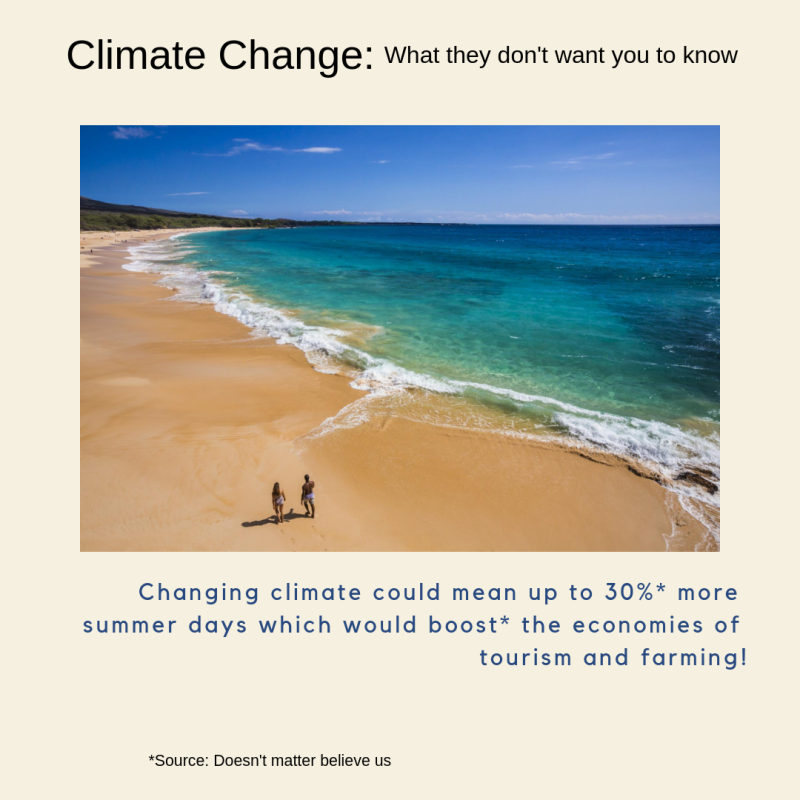
Joseph Woffinden
The picture I made was meant to incorporate aspects of fake news as well as climate change denying. I wanted it to make a statement about how easily people can persuade others into thinking climate change is not a big deal and will have little effect on society. I also put hold lies in the picture to point out that people will sometimes believe what they wanbt to agree with even if it seems outright wrong. On the bottom of the image it doesn't give a source instead a satirical fine print saying that the source of the image and facts were irrelevant. This points out how important it is to be knowledgeable when going through pictures on the Internet or social media because lies are everywhere and often hard to point out.

Kendall Crookston
I automatically thought about the environment and pollution, as it is something that is being heavily talked about in media currently. I also wanted to include the idea of spam - I receive too many fake emails, phone calls, and pop-ups. To pull these ideas together I made a poster for an island getaway to a polluted shoreline. My goal was to make the image clearly fake in order to get a laugh at first, but then have the viewer realize the weight of those 2 problems - pollution and scams. I also wanted to make a statement that pollution is not fake news even though our current president doesn't believe in climate change. The last detail I included was the phone number for the EPA climate change hotline, so if people did think it was real and called the number they would recognize the purpose of the flyer.
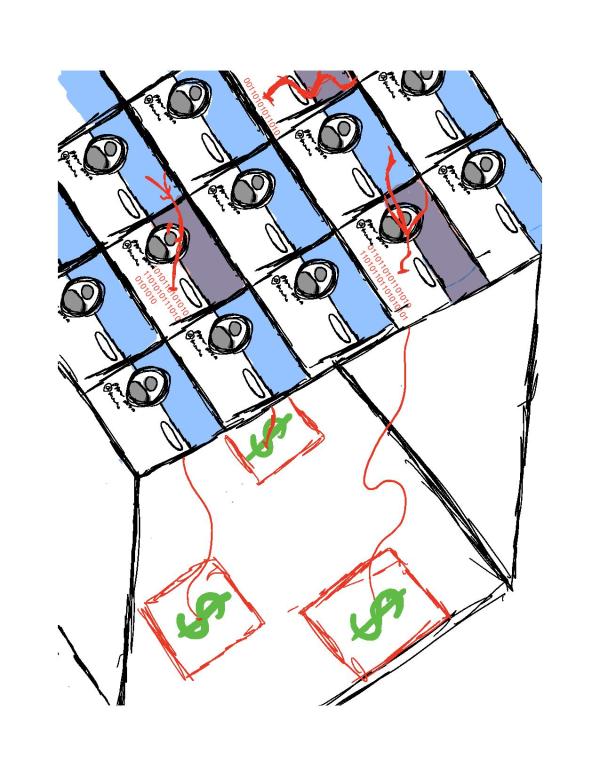
Jacob Lickteig
The image I drew relates to how companies and businesses buy bot accounts that may look just like any other account. The bottom layer shows that there's something being worked on behind the scenes with money involved in order to create these accounts. These accounts can look like just regular people, but they have corrupted intentions, attempting to force consumers to purchase their products or services in a sneaky manner. They can manipulate and trick people. I believe creating art or images about social media bring forth a greater understanding and sheds light on problems that are prevalent within the online community. This affects the way I look at social media by making me more skeptical about things that I see online.

Alex Tulloch
This image has multiple meanings attached to it. For one, all three people in the picture are in fact the same person. This was a reference to the different personas or hats we fall under. What’s more is that they are holding the exact same phone, showing how we can see the same information and have different reactions to it. In a way, the man in the yellow shirt and overalls is trying to block out the version of himself shacked up inside alone. On the flip, the “real” version of myself is looking at the end result of the selfie being taken right next to him, trying to relive that moment of joy when he wasn’t alone; comparing himself to, well, himself. The pink tint of the room was a nod to seeing things through “rose-tinted glasses”, a metaphor for making things seem better than they really are.

Katelyn Kropf

Yintao Gong
You Don't Know Me

Alex Weiker
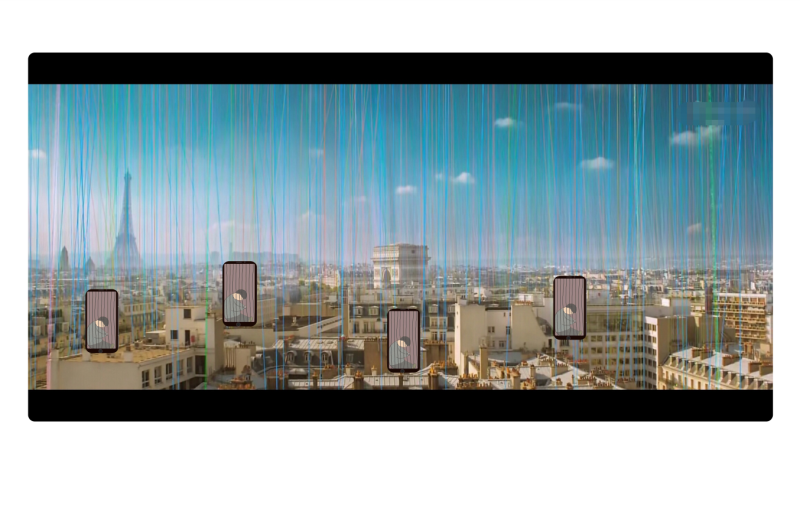
Yi Chen
For my project, the main idea of it is that people in the prison. And this prison is smartphone. On the one hand, I show some people use their phone in a smart phone, this smart phone is like a prison room. On the other hand, the lines with all kind of color is the kind of wave from our phone. It is Internet and signal we use to transfer information. So here it is a big prison. Since you come into the prison of smart phone, it is hard to get out of it. It is hard for people to leave the smart phone to live.

Rachel Orwick
My artwork is a blank face with a choice of three social media masks behind it. I chose to do this because (1) it shows how easy it is to create fake accounts online and (2) you can portray yourself on social media in whatever way you choose. You never know who is truly behind the mask. The Internet allows us to be someone that we are not. You Can be a different person on social media that you are in real life. For media literacy, this makes it hard to find relaible sources because it is hard to tell who it really is.
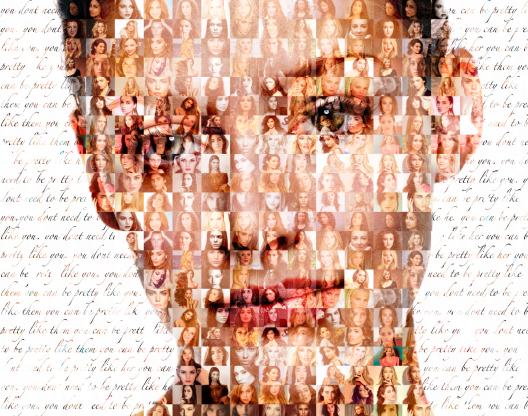
Emily Rowlett

Lexie Shao
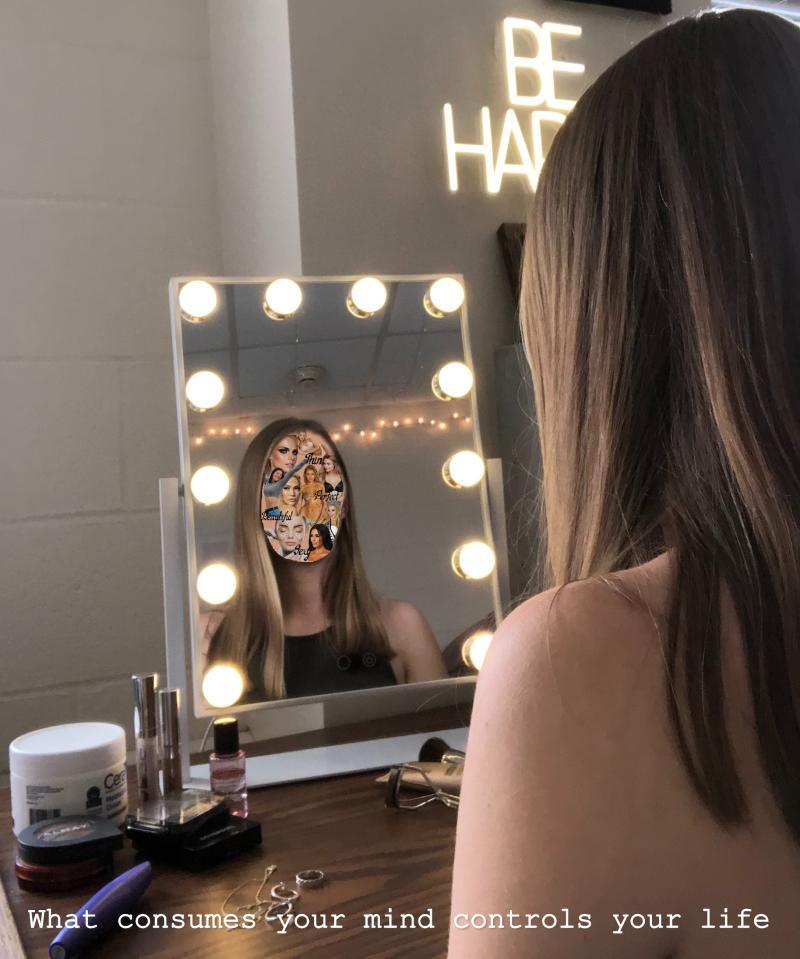
Abby Lenz
The point of view of this is what women see when the look in the mirror: they see what the media tells them they should be and the beauty standards women are held to. Therefore, when you look in the mirror, you see what you are not, instead of all that you are. This is an image I took of myself looking in the mirror and I used pixlr to photoshop in images or beautiful women, models, pop culture icons, and the words “thin”, “beautiful”, “sexy”, and “perfect”. This image represents my relationship with the media because the media is always telling and showing women what they should and shouldn’t be and a lot of the revolves around your physical appearance. I have the quote on the bottom: “what consumes your mind controls your life” because the media does heavily manipulate how women view themselves and each other.
I think it was easy for me to make this because recently I have learned a lot about how the media portrays and manipulates women after watching the documentary Miss Representation. I also think that there are so many other ways that this topic could be approached because the media impacts and manipulates so many aspects of our everyday lives. This project did not affect how I think of the media, because I already knew a lot about how it was manipulative and capitalistic.
